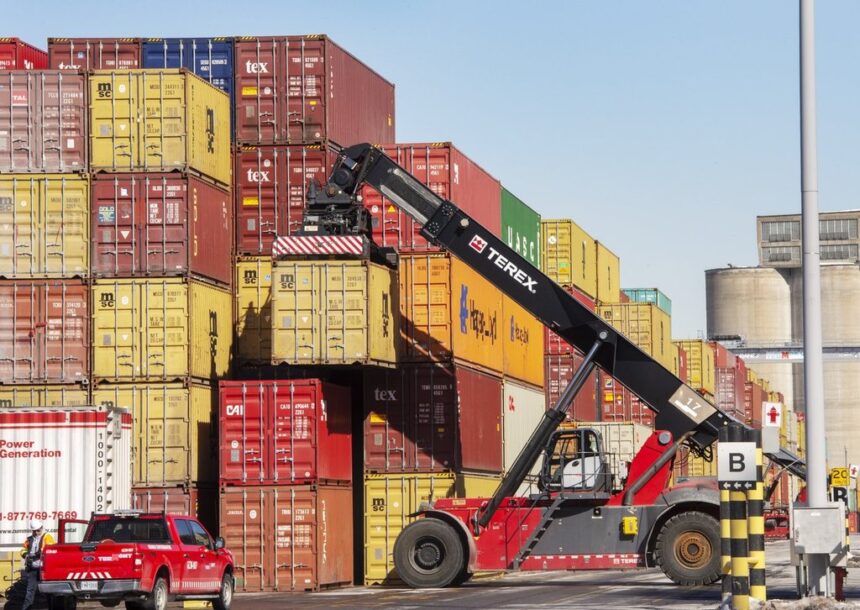Finance Minister Mark Carney revealed Tuesday that Ottawa is poised to announce significant infrastructure funding for Canadian ports, with particular focus on Montreal and Manitoba facilities, as part of a broader strategy to strengthen Canada’s trade capabilities amid growing global economic tensions.
“Our port infrastructure represents critical arteries for Canadian trade,” Carney stated during his address at the Montreal Port Authority’s economic summit. “In the coming weeks, we will be announcing substantial investments designed to modernize these facilities and position Canada as a resilient trade partner in an increasingly fragmented global economy.”
The announcement comes as Canada’s major ports face mounting pressure from increased shipping volumes and aging infrastructure. According to Transport Canada data, container traffic through Canadian ports has increased by 28% over the past five years, while infrastructure investment has lagged behind at just 12% growth during the same period.
Industry analysts have identified the Port of Montreal as particularly vulnerable, with its container handling capacity approaching 92% utilization during peak periods. Manitoba’s inland port initiatives have similarly struggled with connectivity challenges that have limited their integration into national supply chains.
“The timing couldn’t be better,” noted Richard Thompson, chief economist at the Canadian Transportation Research Institute. “With global supply chains undergoing significant realignment due to geopolitical tensions between major trading blocs, Canada has a unique opportunity to position itself as a stable alternative corridor for North American trade.”
The funding package, estimated to exceed $3.8 billion according to government sources familiar with the plan, will prioritize three key areas: automation technologies, environmental sustainability measures, and enhanced intermodal connections between rail, road, and maritime transportation networks.
For Montreal specifically, the investment aims to address critical bottlenecks that have emerged as shipping volumes have surged. The port’s eastern expansion project, which has been in planning stages since 2021, is expected to receive substantial federal backing to increase container capacity by approximately 45%.
Manitoba’s CentrePort Canada, North America’s largest inland port, stands to benefit significantly from improved rail connections and customs processing facilities. The province’s strategic location has long been viewed as underutilized due to infrastructure limitations that have hampered efficient goods movement.
“This represents more than just concrete and steel,” Carney emphasized. “These investments reflect our commitment to building a trade infrastructure that can withstand the economic fragmentation we’re seeing globally while creating substantial employment opportunities across multiple sectors.”
The Canadian Chamber of Commerce estimates that port modernization could generate up to 28,000 direct and indirect jobs nationwide, with particular concentration in construction, advanced logistics, and digital technologies.
Environmental considerations feature prominently in the funding framework, with approximately 30% of allocations earmarked for emissions reduction technologies, shore power capabilities, and more efficient cargo handling equipment. This aligns with Canada’s commitment to sustainable development while enhancing economic competitiveness.
Opposition critics have questioned the timing of the announcement, suggesting it may be politically motivated ahead of upcoming provincial elections. However, industry stakeholders have largely welcomed the initiative as necessary regardless of political considerations.
“The need for this investment transcends politics,” said Marie Dupont, President of the Association of Canadian Port Authorities. “Our international competitors haven’t stood still, and neither can we if we want to maintain our position in global trade networks.”
The funding announcement is expected to be formalized within the next two weeks, according to government sources. It will mark the largest dedicated port infrastructure investment in Canadian history, surpassing the previous record set in 2016.
As global trade patterns continue to evolve amid increasing protectionism and supply chain realignments, will Canada’s strategic investment in its maritime gateways prove sufficient to secure its position as a key player in North American trade, or are we simply playing catch-up to more aggressive international competitors?










